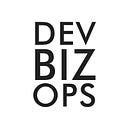Cool Hand Enterprise Architecture
One of my favorite movies growing up was Cool Hand Luke, to the point where I would recite lines as I watched. You may not have seen it, but everyone knows that one famous quote spoken by the warden:
“What we’ve got here is failure to communicate”
I was reminded of this quote last week while in Hong Kong. I was listening to several presenters share their insights on Enterprise Architecture at the EASIG seminar hosted by the Hong Kong Computer Society. The common refrain was that their biggest struggles had little to do with technology, it was all about communication.
Whenever I speak with IT leaders and they tell me that they have technology problems, what they really have are people issues. That is the root case. When there are lots of people spread out across many regions and timezones dealing with lots of complexity, there are always communications breakdowns.
Take the following examples. Unexpected project delays? That’s a lack of coordination. Server crashed? Procedures were not documented. Hit by hackers? No chain of responsibility. Major bugs in production? Yep, we got ourselves a failure to communicate.
That was the theme of Mark Carr’s talk during the seminar. As the Chief Architect of The Hong Kong Jockey Club, he is tasked with coordinating an immensely complex technology landscape that processes more transactions per second during race day than the Hong Kong Stock Exchange. It was not about more or better technology, the operative word was collaboration.
The challenge with Enterprise Architecture is that it often comes off as more ivory tower than motivating practical change. As another presenter quipped, you often feel relegated to becoming a “PowerPoint Jockey”.
Enterprise Architecture is an absolute necessary for global organizations. It is the glue between the vision from the executive suite and the execution of that vision. With processes, standards, and procedures, they ensure more effective and efficient planning and execution across the organization.
Better execution requires better team collaboration to cut through the silos of information. It means having a method for fostering smoother collaboration, encouraging the sharing of knowledge, and documenting the critical aspects of the architecture. This also needs to be convenient to access and driven by an active community that can provide feedback so that architectural choices can be refined and improved. This allows architects get out of the ivory tower and provide practical value so that the architecture is more than just boxes and lines on a slide deck.
Do you have an Enterprise Architecture team to help set global standards? How do you see the value of an Enterprise Architecture to your team?
Why are airline passengers asked to lift up window shades during takeoff and landing?
With all the air travel this time of year, this was an interesting question…
We help IT leaders in enterprises solve the cultural challenges involved in digital transformation and move towards a community based culture that delivers innovation and customer value faster. Learn more about our work here.
